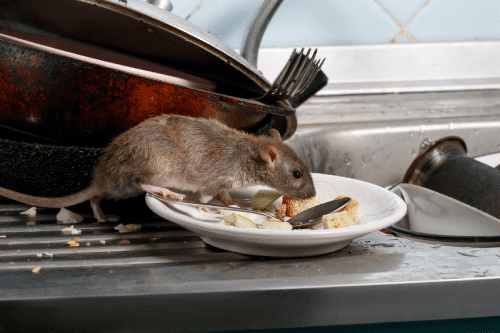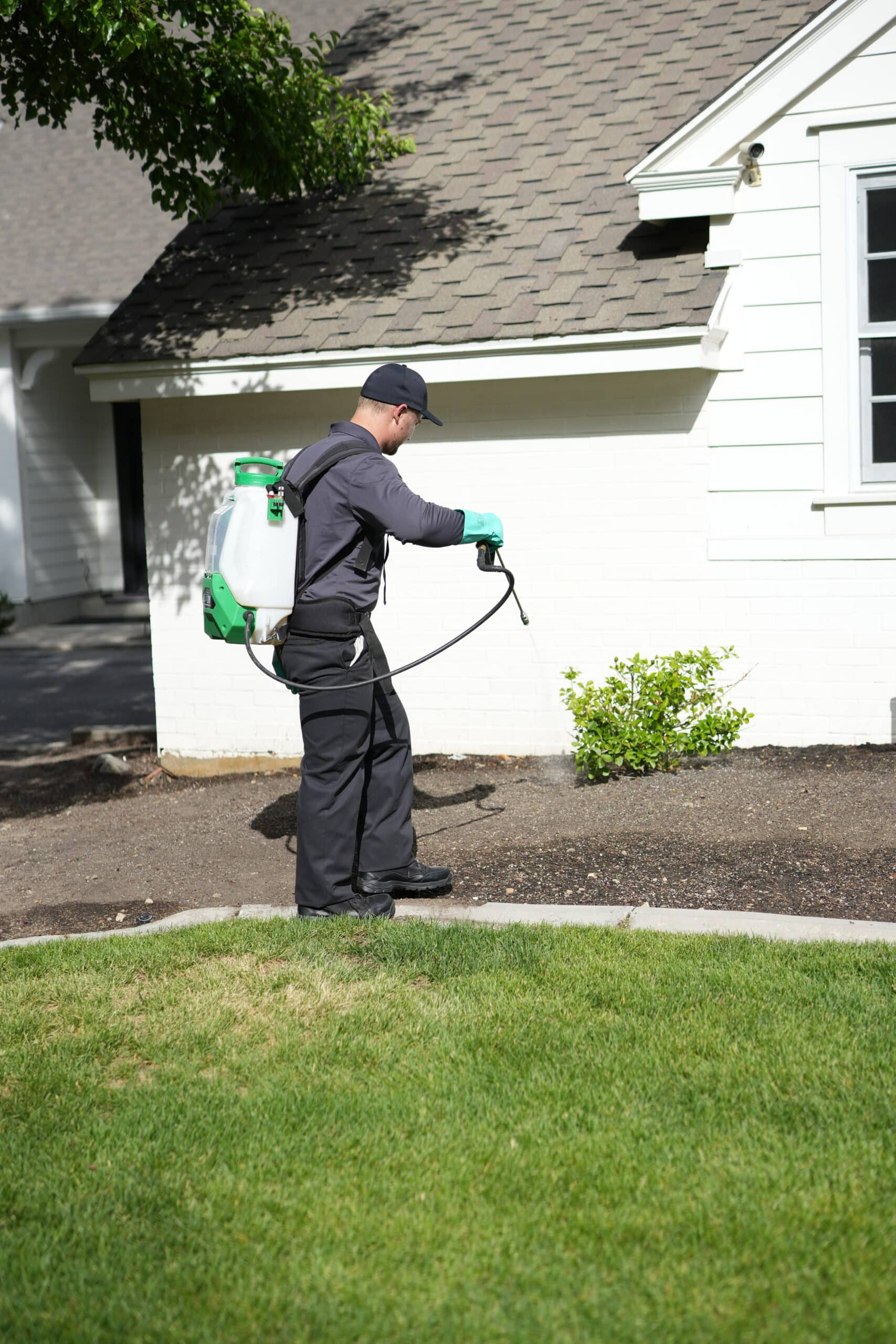ALL ABOUT RATS
Hawx is always reliable. Always innovative.
20,000+ 5-STAR REVIEWS
“Connors Trader went the extra mile to make sure he listened to our needs regarding the ant problem we had.”
- Larry
“He sprayed indoors and out, swept my eaves for spider webs and took care of a couple of wasp nests.”
- Rick
“He even sprayed on my deck, which no one else has done.”
- Sue
Learn about rats
Get $350 Off Rat Service
Stop the invasion; call hawx pest control today!
While domesticated rats can be very cute and smart pets, uninvited rats are something else entirely. Besides gnawing on your belongings and defecating in the crawl spaces of your home, they also carry disease. For these reasons and many more, it’s best to take action at the first signs of a rat problem in your home. Learn more about the different types of rats in the U.S., some common rat behaviors, and how to spot signs of an infestation and properly address it.

Have you spotted signs of a rat invasion? Can you hear the pitter-patter of feet in the roof over your head? Don’t hesitate; call Hawx Pest Control at (888) 372-9514 today.
Understanding common rat behavior
Once you know what’s going on in those little rat brains, it’s easier to stay one step ahead of them, especially if they’re thinking of entering your home.
Socially, rats can live solitary or in a group. If they live in a group, there’s usually a hierarchy among the rats from dominant to subordinate, based on strength. Note, this is not based on gender; instead, males will mate with available females who are also within their determined dominance group.
When a rat feels threatened, they may get violent. You may hear them squeak or scream as they bite you. This is why we highly recommend you don’t try and get rid of rats on your own. Professional pest control services, like Hawx, know how to handle rats safely so that no one is left injured or infected.
Are rats dangerous?
Beyond the potential property damage they can cause to your home, they can also be dangerous to your family’s health because they carry and spread disease. Illnesses and infections including the following may occur as a result of a bite or contact:
- Plague
- Murine typhus
- Lyme disease
- Hantavirus
- Ratbite fever
Note: This isn’t a comprehensive list of all the germs and viruses rats can carry.
What do rats look like?
Unlike mice, rats are easily identifiable by their bigger size and disproportionately large heads, although juvenile rats are often mistaken for mice due to their smaller size. Their tails have coarse, light hairs on them with a defined pattern you can see. They can be brown, black, or gray in color, which also helps them blend into darker areas and stay hidden. Their ears are rounded and usually fairly small, especially when compared to their large head size.
How long do rats live?
In the wild, rats only live for about 1–2 years. Compared to their domesticated counterparts that have an estimated lifespan of 4-5 years, wild rats’ lower quality of life and scarcity of food and shelter are likely reasons for their shorter lifespan.
What do rats eat?
Wild rats that enter your home will happily eat any human or pet food that is left unattended. They enjoy plants, fruit, and seeds that they can easily find in nature. Some rats eat insects and other animals, dead or alive.
One way to reduce a rat population near your home is to better manage leftover food and store it properly or throw it out in a secure receptacle.
Where do rats live?
Norway rats burrow. In your yard, they often find refuge in wood piles or any other accessible hiding place that offers shelter from the elements.
Inside your home, they can live quite comfortably off the contents in your garbage can. They’ll make shelter by borrowing scraps, fabric, or other malleable materials for their nests that they build in your rafters or crawl spaces.
Types of rats
In the U.S., there are three common rats that you may find in your home or around your yard:
- Norway rat (brown rat)
- Roof rat (black rat)
- Woodrat (pack rat)
Learn more about each type below, including where they can be found in the U.S., what they eat, and what they look like.
Norway rats
Commonly used for lab experiments, Norway rats are your run-of-the-mill brown (or gray) rat that you might see running around a city. They’re big in size, measuring about 13–18 inches long, including their dextrous tail.
You can find these types of rats throughout the U.S. They eat birds and bird eggs, all types of plants, and insects. But these types of rats will generally eat anything that is available to them.
Roof rats
Also known as the black rat, this breed is extremely common. They get their name from seeking solace in the upper part of building structures as well as their typically dark brown or black color. In addition, they have lighter-colored underbellies.
Smaller than the Norway rat, roof rats measure only 6–8 inches in length, including their longer-than-usual tail. Roof rats tend to be found in coastal and tropical climates.
They eat small animals, like birds, insects, seeds, and nuts. However, they’re especially attracted to dog or cat food that’s been left unattended.
Woodrats
Known for their typical “rat-like” appearance, woodrats are also known as pack rats, because of the way they build nests out of found objects. They’ll also “trade” one object for another by dropping it if they find something better.
The danger with these types of rats is the tendency for them to build large nests and distribute their droppings nearby in what are known as designated “latrine areas.” This means your infestation problem could include a rat’s nest and a rat’s smelly latrine area in close proximity to your house.
Signs of a rat infestation
Once you know what you’re looking for, it’s not difficult to recognize the signs of a rat infestation. Keep an eye out for:
- Clustered droppings around the sink and in cabinets
- Rancid smells coming from invisible sources
- Chewed-up surfaces or food packaging
- Nesting material gathered up and left around your home
While all of these would definitely signify an infestation, it’s wise to reach out to a pest service to assess the severity of the problem.
What kind of damage can rats cause?
Rats like chewing on any and all surfaces they deem to be either food or good for nesting. This can include wires, books, and structural materials that hold your home up. Chewed wires are also a known cause of housefires.
Rats also defecate a lot, which means it will be all over your home. If left uncleaned, rat poop can create an opportunity for infection to occur.
How to get rid of rats
Whether these fuzzy intruders are stationed inside or outside of your home, there are some easy things you can do before you have to call in a professional.
If you find yourself looking at a rat infestation, try the following tips:
- Remove their food sources (if you can find them)
- Remove their shelter (find out if they’re nesting and where)
- Seal gaps in your structure to keep rats out
- Observe your pet’s behavior (they might lead you right to a rat’s nest)
- Set traps in areas you think might be frequented by rats
If these methods don’t work, a professional rat treatment may be needed. Whatever you do, don’t attempt to remove rats by hand. That may cause you to get injured, infected, or both.
Getting rid of rats in your walls and ceiling
The trick to getting rid of rats who are hiding behind walls and ceilings is to think about all possible entry points and then seal them off. Trimming tree branches in addition to sealing open gaps in your structure are both important (especially since rats are prone to seek higher shelter).
Make your home as unattractive to rats as possible by storing trash in sealed containers they can’t access as well as keeping an eye on pet food that is left out. Remember to also remove anything in your yard that rats may be able to use for nesting. Dispose or compost fallen leaves, wood chips, and loose fabric scraps.
If you don’t feel comfortable trying to tackle a rat infestation on your own (or the infestation has grown out of control), call us at Hawx and receive the best professional treatments to address any rats living around your home.
Get $350 Off Rat Service




